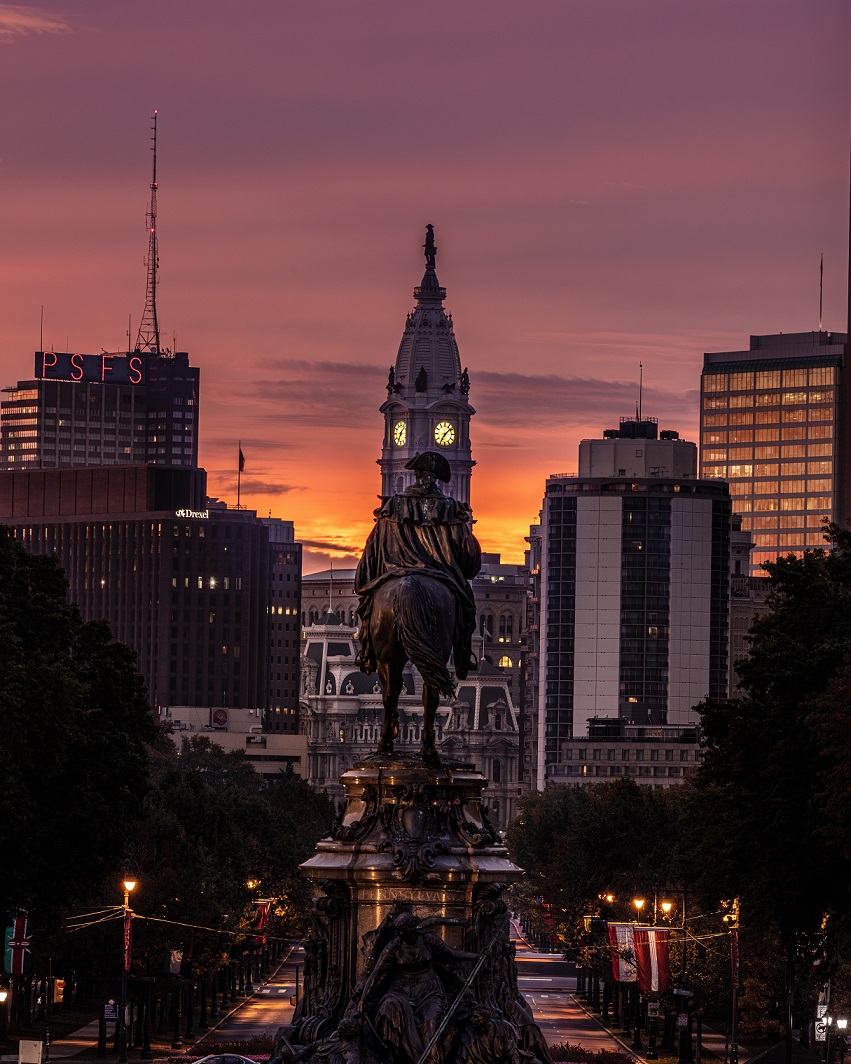Philadelphia, Pennsylvania, holds a unique place in American history as the birthplace of the nation and the epicenter of the Revolutionary War. It was in this city that the Founding Fathers convened to draft the Declaration of Independence and the United States Constitution. But Philadelphia’s Revolutionary War legacy extends beyond its role as a political hub. Two crucial events, Valley Forge and Washington’s Crossing of the Delaware River, are etched into the annals of American history as testaments to the resilience, sacrifice, and determination of the Continental Army and its commander, General George Washington. In this article, we will delve into these pivotal moments that shaped the American Revolution and the nation itself.
Valley Forge: The Crucible of the Revolution
Valley Forge, located approximately 20 miles northwest of Philadelphia, is synonymous with the hardships faced by the Continental Army during the harsh winter of 1777-1778. It is a symbol of the sacrifices made by American soldiers and their unwavering commitment to the cause of independence.
The Winter Encampment: Following a series of defeats and setbacks, General George Washington and his troops settled into Valley Forge in December 1777. The location was chosen for its defensibility, proximity to British-occupied Philadelphia, and access to crucial supply routes. However, Valley Forge offered little in the way of shelter, and the soldiers faced brutal conditions, including bitterly cold temperatures, inadequate clothing, and scarce food.
Suffering and Resilience: During the winter at Valley Forge, the Continental Army faced immense suffering. Many soldiers lacked proper shoes, and their bloody footprints could be seen in the snow as they moved around camp. Malnutrition, disease, and exposure to the elements claimed the lives of nearly 2,000 soldiers, with thousands more falling ill.
Despite these dire circumstances, the soldiers’ determination and resilience remained unshaken. It was at Valley Forge that the Prussian officer Friedrich Wilhelm von Steuben arrived to train and discipline the troops. His expertise in military tactics and discipline was instrumental in transforming the Continental Army into a more professional and effective fighting force. The soldiers drilled relentlessly, honing their skills and developing a stronger sense of unity.
Emerging Stronger: By the spring of 1778, the soldiers at Valley Forge emerged as a revitalized and better-disciplined force. They had endured incredible hardships, and their sacrifices were instrumental in securing American independence. Valley Forge became a symbol of the Continental Army’s resolve, a place where a group of diverse, ragtag soldiers forged a greater sense of purpose and unity in the face of adversity.
Washington’s Crossing: The Turning Point
Washington’s Crossing of the Delaware River is another pivotal event that occurred during the American Revolution, underscoring the strategic brilliance and determination of General George Washington.
The Situation in 1776: In December 1776, the American Revolution was in a dire state. The Continental Army had suffered a series of defeats, including the loss of New York City. The British, under General William Howe, were advancing, and morale among American troops was at a low point. With enlistments set to expire at the end of the year, Washington faced the imminent disintegration of his army.
The Bold Plan: In a daring and audacious move, General Washington devised a plan to cross the ice-filled Delaware River on the night of December 25-26, 1776. His objective was to launch a surprise attack on the Hessian forces stationed in Trenton, New Jersey, who were celebrating Christmas and not expecting an assault.
The Crossing: The night of the crossing was treacherous, with howling winds and frigid temperatures. Washington’s men, many of them ill-equipped and without proper winter clothing, faced severe hardships. Despite these challenges, they managed to transport artillery and nearly 2,400 soldiers across the ice-clogged river in small boats.
The Victory at Trenton: On the morning of December 26, 1776, Washington’s forces launched a successful attack on the Hessian garrison in Trenton. The surprise assault resulted in the capture of over 900 Hessian soldiers and provided a much-needed morale boost to the American cause. This victory was followed by another successful engagement at Princeton in early January 1777.
The Impact: Washington’s Crossing and the subsequent victories at Trenton and Princeton breathed new life into the American Revolution. The daring maneuver and triumphs bolstered the confidence of the Continental Army and inspired many soldiers to reenlist. It also demonstrated to the world that the American cause was not lost and that the Revolution had the potential for success.
These two pivotal events—Valley Forge and Washington’s Crossing—underscore the resilience, sacrifice, and leadership that characterized the American Revolution. They symbolize the indomitable spirit of the Continental Army and its commander, General George Washington, who faced enormous challenges and setbacks but never wavered in their commitment to securing the nation’s independence.
Today, Valley Forge and Washington’s Crossing are preserved as historical sites and national parks, allowing visitors to walk in the footsteps of those who endured the harsh winter and those who crossed the icy river. These sites serve as powerful reminders of the sacrifices made by the patriots of the American Revolution and the enduring legacy of their determination and courage in the fight for freedom. Philadelphia’s Revolutionary War legacy, as exemplified by these events, continues to inspire and educate generations about the birth of the United States and the enduring values of liberty and resilience.
